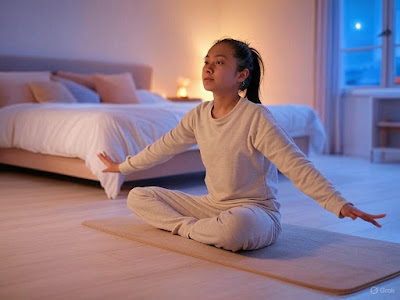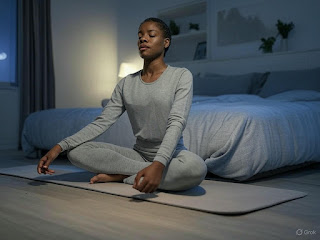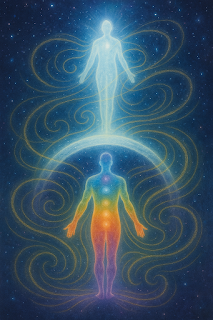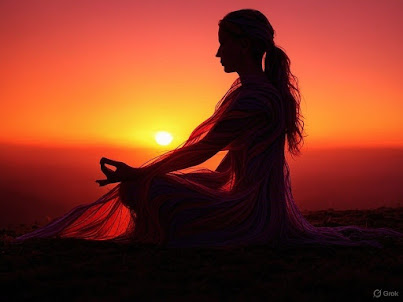10-Minute Yoga to Fall Asleep Fast
10-Minute Yoga to Fall Asleep Fast: Relaxing Bedtime Routine
Struggling to shut off your mind and fall asleep at night? You’re not alone. Fortunately, this 10-minute yoga to fall asleep fast routine could be your secret weapon. With simple, beginner-friendly yoga poses, you can relax your body, quiet your thoughts, and drift off in no time—no yoga mat or fancy yoga classes required. Designed as a soothing bedtime yoga sequence, these stretches take just minutes to relieve tension and prepare you for deep, restful sleep. Ready to trade tossing and turning for sweet dreams? Let’s get started.
Why Bedtime Yoga Works
Ever wonder why bedtime yoga feels so good before sleep? It’s not just in your head—there’s science behind it. Gentle yoga poses calm your nervous system, lowering stress hormones like cortisol while boosting relaxation. This shift helps your body transition into rest mode, improving sleep quality and paving the way for restful sleep. Studies show that even a short yoga practice can reduce the time it takes to fall asleep, especially when done consistently as part of an evening yoga routine. Think of it as a natural lullaby for your mind and muscles—perfect for unwinding after a long day.
Research backs this up: a 2015 study found that consistent yoga practice can cut sleep latency—the time it takes to fall asleep—by up to 20%, boosting overall sleep quality. By stretching tight muscles like your shoulders and hips, you release tension that keeps you awake. Plus, focusing on deep breathing in poses like Corpse Pose triggers the parasympathetic nervous system, slowing your heart rate and easing you into rest. This combo of physical and mental calm is why evening yoga outperforms basic relaxation for better sleep.
Benefits of Evening Yoga
Practicing yoga in the evening offers a multitude of benefits that can help you fall asleep faster and enjoy a more restful night. Here’s why incorporating evening yoga into your routine is a game-changer:
-
Signals Wind-Down Time: Evening yoga acts as a gentle reminder to your body that it’s time to wind down. By engaging in calming yoga poses, you signal to your nervous system that the day is ending, making it easier to transition into sleep mode.
-
Reduces Stress and Anxiety: One of the most significant benefits of practicing yoga in the evening is its ability to reduce stress and anxiety. Gentle stretches and deep breathing techniques help lower cortisol levels, the stress hormone, allowing your mind to relax and prepare for sleep.
-
Regulates Sleep-Wake Cycle: Consistent evening yoga practice can help regulate your body’s natural sleep-wake cycle. By establishing a routine, you train your body to recognize when it’s time to sleep, leading to more consistent and restful nights.
-
Improves Sleep Quality: Yoga has been shown to improve the quality of sleep by reducing symptoms of insomnia and other sleep disorders. The combination of physical relaxation and mental calmness helps you fall asleep faster and stay asleep longer.
-
Boosts Melatonin Production: Evening yoga can also increase the production of melatonin, the hormone responsible for regulating sleep. This natural boost can make it easier to fall asleep and enjoy deeper, more restorative sleep.
By incorporating evening yoga into your bedtime routine, you can enjoy these benefits and transform your sleep experience.
Creating a Bedtime Yoga Routine
Establishing a bedtime yoga routine is a simple yet effective way to signal to your body that it’s time to sleep. Here’s how to create a relaxing and restorative bedtime yoga practice:
-
Set the Scene: Start by setting aside a quiet and comfortable space for your bedtime yoga practice. Dim the lights, play soft music, or light a candle to create a calming atmosphere.
-
Choose Gentle Poses: Select a few gentle yoga poses that help you relax and unwind. Favorites like Child’s Pose, Legs Up the Wall, and Corpse Pose are perfect for easing into sleep.
-
Focus on Your Breath: Begin your practice by taking a few deep breaths and focusing on your breath. Breathing deeply helps calm your mind and prepares your body for relaxation.
-
Move Slowly: Move slowly and gently through each pose, holding each one for a few breaths. This mindful approach helps release tension and promotes a sense of calm.
-
End with a Resting Pose: Conclude your practice with a final resting pose, such as Corpse Pose. Take a few deep breaths, allowing your body to fully relax before getting into bed.
-
Consistency is Key: Aim to practice yoga for at least 10-15 minutes before bedtime. Consistency helps signal to your body that it’s time to sleep, making it easier to fall asleep over time.
-
Incorporate Restorative Yoga: Consider incorporating restorative yoga into your bedtime routine. Use props like pillows or blankets to support your body in relaxing poses, enhancing the calming effects.
-
Listen to Your Body: Make sure to listen to your body and modify or avoid any poses that cause discomfort or pain. The goal is to relax, not to push yourself.
-
Establish a Routine: Try to establish a consistent bedtime yoga routine to help regulate your body’s natural sleep-wake cycle. Over time, this routine will become a powerful signal for sleep.
-
Breathe Deeply: Remember to breathe deeply and focus on your breath throughout your practice. Deep breaths help calm your mind and body, making it easier to drift off to sleep.
By following these steps, you can create a bedtime yoga routine that helps you relax, unwind, and enjoy a more restful night’s sleep.
Your 10-Minute Bedtime Routine
Here’s the heart of it: a 10-minute yoga sequence to help you fall asleep fast. Each pose lasts about 2 minutes, flowing together for a true bedtime routine you can do on your bed or floor. Breathe deeply through each stretch, letting your body relax as you go. Here’s how to do it.
-
Head to Knee Pose (Janu Sirsasana): Sit with one leg extended and the other bent, bringing your head towards your knee. This pose stretches the hamstrings and promotes relaxation.
Child’s Pose (Balasana)
-
Time: 2 minutes
-
How to Do It: Start on your knees, spread them wide, and bring your big toes to touch. Sit back toward your sit bones, then fold forward, resting your forehead on the ground (or a pillow). Let your arms relax alongside your body or stretch them forward—whatever feels good.
-
Why It Works: This classic child’s pose, or child’s pose balasana, gently stretches your hips and lower back, helping to release tension built up during the day. Focus on slow, deep breaths to melt away stress.
-
This restorative yoga staple also soothes your lower back and shoulders, areas where tension hides. Sink your sit bones deeper with each exhale, letting your knees widen naturally. Picture your worries dissolving into the floor—perfect for winding down in only a few minutes before sleep takes over.
Legs-Up-the-Wall
-
Time: 2 minutes
-
How to Do It: Lie flat on your back and scoot your sit bones close to a wall (or headboard). Lift your legs straight up, resting them against the surface. Keep your arms relaxed alongside your body, palms facing upward, and let gravity do the work.
-
Why It Works: Legs up the wall drains tension from your lower body, calms your mind, and promotes circulation—perfect for better sleep. It’s as simple as it is effective.
-
Elevating your legs resets circulation, easing swollen feet or a restless lower body after a long day. Rest your shoulders flat, releasing upper body stiffness. This gentle inversion, rooted in yin yoga principles, calms your mind effortlessly, setting the stage for deep, uninterrupted sleep.
Butterfly Pose
-
Time: 2 minutes
-
How to Do It: Sit up, bring the soles of your feet together, and hold your big toes or ankles. Let your knees drop out to the sides, forming a diamond shape. Sit tall, lengthen your spine, and take deep breaths. If it’s tight, prop your knees with a folded blanket.
-
Why It Works: Butterfly pose opens your hips and inner thighs, easing stiffness while encouraging deep breathing. It’s a gentle way to unwind before bed.
-
By opening your hips wider, you relieve tension stored from sitting or stress. Press your knees gently toward the floor, feeling your spine elongate. This seated position invites calm, syncing with deep breathing to quiet your nervous system—a simple trick for better rest tonight.
Happy Baby
-
Time: 2 minutes
-
How to Do It: Lie flat on your back, bend your knees, and bring them toward your chest. Grab the outsides of your feet or your big toes, spreading your knees wide. Rock gently side to side like a happy baby, keeping your tailbone grounded.
-
Why It Works: This playful happy baby pose releases your lower back and hips, helping you relax fully. The slight rocking motion soothes your spine, lulling you closer to sleep.
Corpse Pose
-
Time: 2 minutes
-
How to Do It: Lie flat on your back, legs slightly apart, arms relaxed by your sides with palms facing upward. Close your eyes, take deep breaths, and let your whole body sink into the surface. Imagine tension melting away from head to toe.
-
Why It Works: Corpse pose, your final resting pose, is the ultimate relaxation move. It slows your heart rate and prepares you for sweet dreams, making it the perfect close to this 10-minute yoga flow.
-
Lie flat longer, letting your feet fall outward naturally. This final resting pose resets your nervous system completely, syncing breath with stillness. Feel your shoulders soften and your body sink—it’s the ultimate bridge to sleep, turning ten minutes into a gateway for better rest.
Breathing Techniques to Enhance Your Evening Yoga
Want to supercharge your evening yoga? Add some simple breathing techniques. Before you start—or even during corpse pose—try this: Sit in an easy pose (legs crossed, spine tall), inhale for 4 counts, and exhale for 6. Repeat for 30 seconds. Taking deep breaths like this calms your nervous system, signaling your body it’s time to relax. It’s a small tweak that amplifies the sleepy vibes of your bedtime yoga, helping you drift off even faster.
Tips for a Restful Bedtime Routine
To make this 10-minute yoga to fall asleep fast a nightly win, set yourself up for success with these tips:
-
Create the Mood: Dim the lights, play soft music, or use a folded blanket for extra comfort under your knees or back.
-
Pay Attention to Alignment: Ensure proper alignment in poses like Supta Padangusthasana by positioning your left knee correctly. This helps in achieving the pose effectively and avoiding discomfort.
-
Avoid Energizers: Skip poses like cat cow or cat pose—they’re great for mornings but too stimulating for better rest.
-
Keep It Simple: You don’t need a yoga mat or hours of practice yoga time. This bedtime routine takes only a few minutes and works anywhere.
-
Stick With It: Do it nightly to train your body for sleep. Consistency turns this quick stretch into a powerful habit.
Small adjustments like these ensure your evening yoga delivers maximum relaxation with minimal effort.
Common Mistakes to Avoid
Want your 10-minute yoga to fall asleep fast to work its magic? Steer clear of these pitfalls. First, avoid energizing poses like Cat Cow Pose or Cat Pose—they’re great for waking up, not winding down. Stick to restorative yoga instead, keeping your nervous system calm. Second, don’t rush through poses—hold each for the full two minutes to release tension properly, especially in your shoulders and knees. Skimping on time cuts the sleep benefits short. Third, resist checking your phone mid-routine; screens disrupt melatonin, undoing your relaxation. Fourth, don’t overstretch—pushing too hard in Butterfly Pose or Happy Baby can wake your body up rather than soothe it. Use a folded blanket or pillow if your hips or back feel strained. Finally, skipping deep breaths is a no-go; breathing techniques amplify the calm, so take slow, deliberate inhales and exhales. Avoid these missteps, and your bedtime yoga will deliver better sleep every night—just a few minutes can make all the difference when done right.
FAQ
Can yoga replace sleep aids?
For many, yes—this 10-minute yoga routine can ease you into sleep without pills. Research shows yoga improves sleep quality by calming your nervous system and cutting stress, often rivaling mild sleep aids. Start with poses like Legs-Up-the-Wall, and you might ditch the melatonin—though consult a doctor if you’re on meds.
What if I’m new to yoga?
No worries—this bedtime routine is beginner-friendly. You don’t need a yoga mat or classes; just a comfy spot works. Use props like a folded blanket under your knees in Child’s Pose or Butterfly Pose to ease tight hips or shoulders. Start slow, breathe deeply, and relax into each pose—it’s about calm, not perfection.
How often should I do this?
Nightly is ideal. Practicing yoga consistently—even just a few minutes—trains your body for better rest. Studies suggest regular evening yoga boosts sleep efficiency over time, so make it a bedtime habit. Miss a night? No stress—just pick it back up.
Why don’t I feel sleepy right away?
It varies—some drift off in Corpse Pose, others need a few sessions to adjust. Check your setup: dim lights, skip Cat Cow, and focus on taking deep breaths. If tension lingers in your lower body or shoulders, hold poses longer or add Happy Baby for extra release. Patience pays off.
Can I do this in bed?
Absolutely! This routine adapts to any surface. Lie flat for Corpse Pose or prop your legs up the headboard for Legs-Up-the-Wall. It’s all about a comfortable position—your bed’s softness might even deepen the relaxation for sweet dreams.
Conclusion
If you’re tired of staring at the ceiling, this 10-minute yoga to fall asleep fast routine is your answer. With calming bedtime yoga moves like child’s pose, legs up the wall, and corpse pose, you can relax your body and mind in no time. It’s quick, easy, and proven to help you fall asleep faster—no equipment or expertise needed. Try it tonight, feel the tension slip away, and wake up refreshed. Have a favorite pose or sleep tip? Share it below—I’d love to hear how this works for you!







